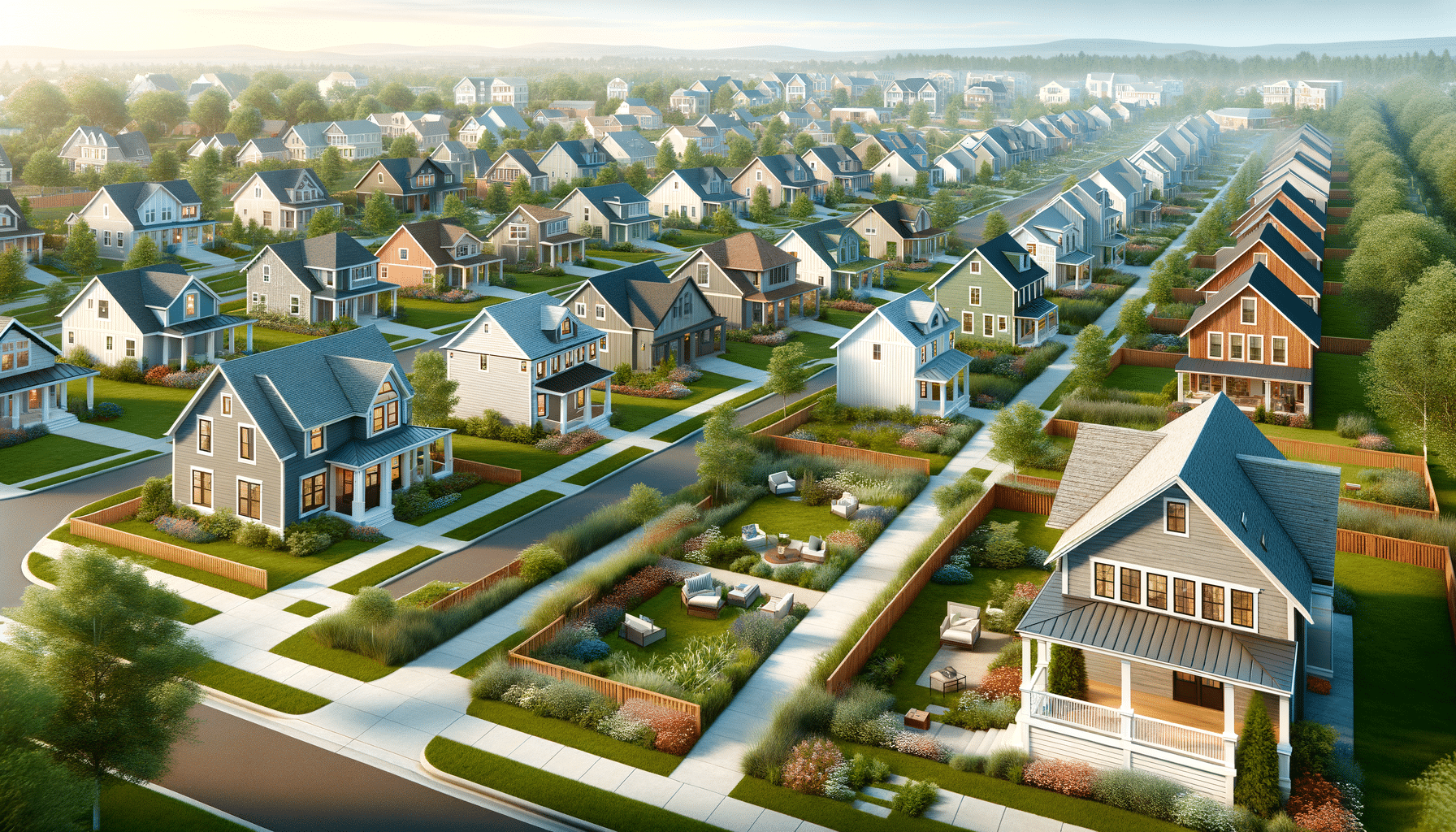
The Increasing Popularity of Modular Homes in the US: An Upcoming Revolution in Housing
The Rise of Modular Homes: A New Era in Housing
The concept of modular homes is not entirely new, but their recent surge in popularity marks a significant shift in the US real estate market. Modular homes, often referred to as prefabricated or prefab homes, are constructed in sections or modules in a factory setting. These modules are then transported to the site where they are assembled to form a complete home. This process offers several advantages over traditional construction, including speed, cost-effectiveness, and environmental benefits.
One of the primary reasons for the growing interest in modular homes is their affordability. Traditional home construction can be expensive and time-consuming, often subject to delays due to weather conditions or labor shortages. In contrast, modular homes are built in a controlled environment, which minimizes delays and reduces costs. This makes them an attractive option for first-time homebuyers or those looking to downsize without compromising on quality.
Moreover, modular homes are gaining attention for their unique and customizable designs. Unlike cookie-cutter houses, modular homes offer a range of design options that cater to individual preferences and needs. Homeowners can choose from various layouts, finishes, and features, allowing for a personalized living space that reflects their style.
Environmental Benefits of Modular Homes
As environmental concerns continue to rise, modular homes present a sustainable alternative to traditional construction methods. The factory-based construction process of modular homes results in less waste compared to on-site building. Materials are precisely measured and cut, reducing the amount of excess material that typically ends up in landfills.
Additionally, modular homes are often designed with energy efficiency in mind. They can incorporate advanced insulation, energy-efficient windows, and sustainable materials that contribute to lower energy consumption. Many modular home manufacturers also offer options for integrating renewable energy systems, such as solar panels, further enhancing their eco-friendly appeal.
The reduced construction time associated with modular homes also translates to a smaller carbon footprint. With less time spent on-site, there is a decrease in the energy and resources used during the building process. This efficiency not only benefits the environment but also results in cost savings for homeowners.
Challenges and Misconceptions Surrounding Modular Homes
Despite their advantages, modular homes face certain challenges and misconceptions that can deter potential buyers. One common misconception is that modular homes are of lower quality compared to traditional homes. However, this is far from the truth. Modular homes must adhere to the same building codes and standards as site-built homes, ensuring they meet or exceed quality expectations.
Another challenge is the limited availability of modular home builders in certain regions. While the industry is growing, some areas may have fewer options for modular home construction, which can affect accessibility for interested buyers. Additionally, obtaining financing for modular homes can sometimes be more complex due to unfamiliarity among lenders. However, as the popularity of modular homes increases, more financial institutions are becoming aware of their value and offering competitive mortgage options.
Addressing these challenges requires educating the public and industry stakeholders about the benefits and realities of modular homes. As awareness grows, so too will the acceptance and adoption of this innovative housing solution.
Comparing Modular Homes to Traditional Homes
When comparing modular homes to traditional homes, several key differences and similarities emerge. One of the most notable differences is the construction timeline. Modular homes can be completed in a fraction of the time it takes to build a traditional home, often within a few weeks. This expedited timeline is due to the efficient factory-based construction process and the ability to work simultaneously on-site preparation and module fabrication.
Cost is another area where modular homes have an advantage. The streamlined construction process and reduced labor costs contribute to lower overall expenses. Additionally, the precision of factory construction often results in fewer on-site issues and repairs, saving homeowners money in the long run.
In terms of design, modular homes offer flexibility and customization that rivals traditional homes. Homeowners can choose from a range of styles, layouts, and finishes, ensuring their home meets their specific needs and preferences. Furthermore, modular homes can be expanded or modified with relative ease, allowing for future growth or changes in lifestyle.
However, both modular and traditional homes must comply with local building codes and regulations, ensuring safety and quality standards are met. This compliance ensures that regardless of the construction method, homeowners receive a durable and reliable living space.
The Future of Modular Homes in the US Real Estate Market
As the US real estate market continues to evolve, modular homes are poised to play an increasingly significant role. The demand for affordable, efficient, and sustainable housing solutions aligns perfectly with the benefits offered by modular homes. As more people become aware of these advantages, the modular home industry is expected to expand and innovate further.
Technological advancements are likely to drive the future of modular homes, with new materials and construction techniques enhancing their appeal. The integration of smart home technology and sustainable energy solutions will further position modular homes as a forward-thinking housing option.
Moreover, as urban areas become more crowded and land becomes scarce, modular homes offer a practical solution for maximizing space and resources. Their ability to be constructed in various settings, from urban infill lots to rural landscapes, makes them a versatile choice for diverse housing needs.
In conclusion, the rising trend of modular homes in the US real estate market reflects a broader shift towards innovative, efficient, and sustainable living solutions. As the industry grows and evolves, modular homes are set to become a prominent feature of the housing landscape, offering a viable alternative to traditional construction methods.

